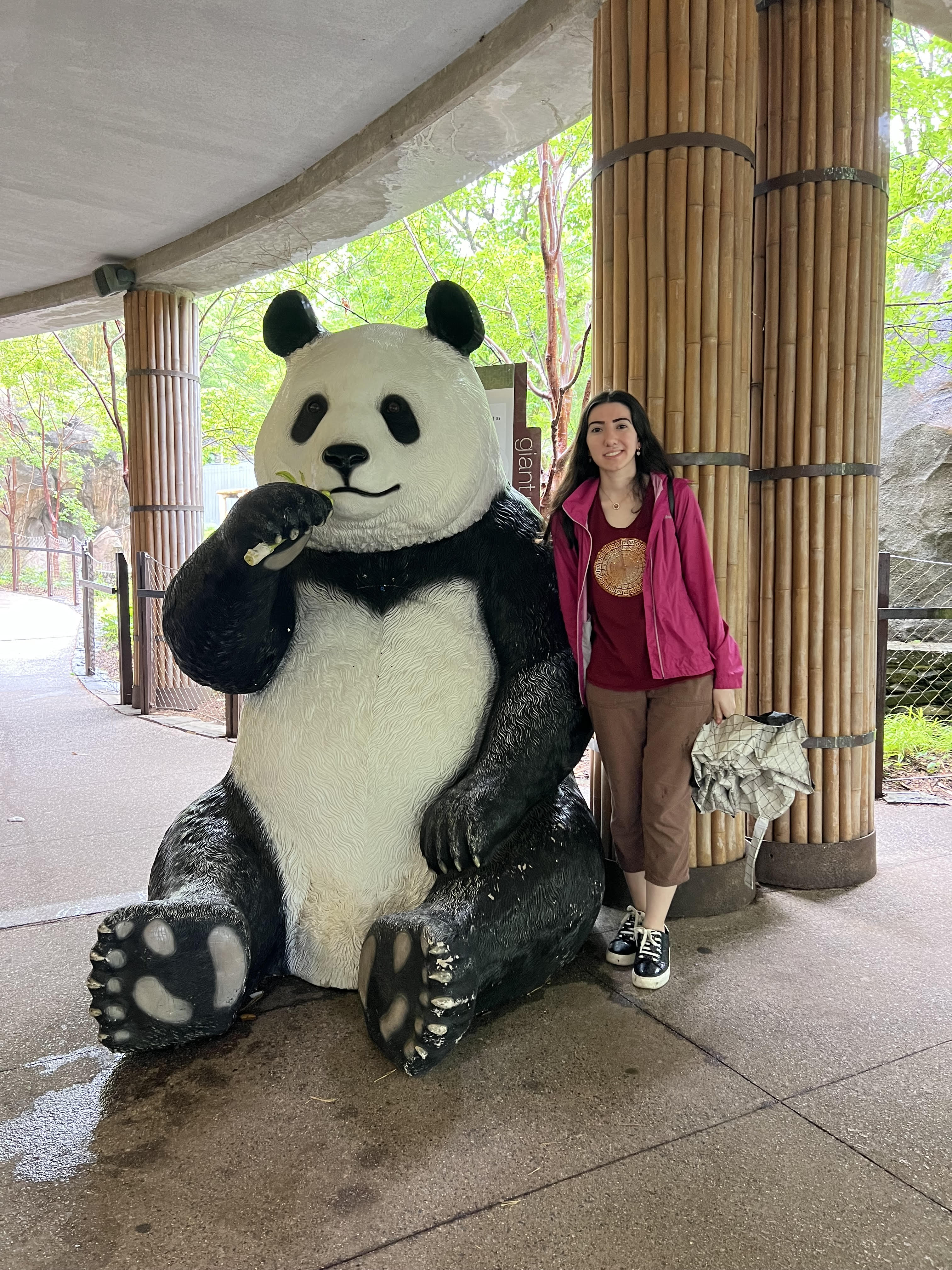Event name: National Zoo
Event time and place: 5/4/25, Washington D.C.

Picture of me with a panda statue at the panda exhibits
While visiting the National Zoo, I attended Dr. Merck’s informative tour of the Amazonia building. Dr. Merck described various species from the vastly diverse Amazon region, from fish to amphibians to birds. One of the species mentioned was the cecilialin, a limbless serpent-like amphibian with small eyes that can live in aquatic environments. This species is often compared to worms and is known for having poor vision and burrowing into the ground. Another interesting species of animal discussed was the roseate spoonbill, a bird known for its distinctive pink plumage and uniquely shaped bill. It was also stated that this type of bird typically lives in marshes, swamps, and other wetland areas.
Another building I visited during the trip was the newly reopened birdhouse, in which I was able to observe numerous birds from all regions of the world. I observed flamingos, scarlet ibises, and American turkeys outside of the building, as well as birds inside the building, including ducks and indigo buntings. Although the birds inside were in captivity, they had the opportunity to freely move and fly around in the presence of visitors. There were also many plants and trees for the birds, and nests created for them. Moreover, the temperature and humidity levels were adjusted to better fit their real environments. All these added conditions helped make the environment more realistic to that of the wild and make the birds feel more comfortable in their current state.
Outside of the above specific buildings I visited, I also had the opportunity to view other exhibitions. A species I observed while on the Asian trail was the panda. While investigating the premises, I noticed how the pandas had many areas to roam about and numerous types of plants (e.g., bamboo) as food available to them, similar to their original wild habitats. Additionally, they had toy-like structures for them to stretch and play with, allowing them to exercise and stimulate their minds, like they would in the wild. Furthermore, I realized that there were many panels and videos that better explained the anatomy of the pandas and their environment. Rather than printing complicated, long amounts of information for the visitor, these videos were especially helpful in presenting facts about the pandas. However, I acknowledge how the information panels that I did see were nice in that they featured diagrams and photos and were written in an extremely simple, concise, and well-organized format. Based on this, it appears that the education level of this particular exhibit was aimed at children or non-experts in this field, as well as those seeking to learn quick, basic facts about the species. These observations were also made when seeing the Asian elephants. The elephants had a vast, spacious area with many trees and sources of water. In addition, there were many signs with minimal information and large colored pictures, which were easy to follow for the visitor and allowed for an overall better understanding of the species and their lifestyles.


